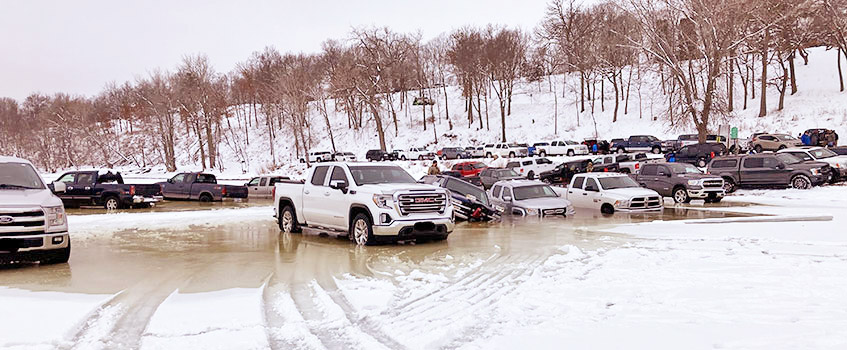MN DNR
Cars, pickups or SUVs should be parked at least 50 feet apart and moved every two hours to prevent sinking. Stationary loads (longer than two hours) require thicker ice than the standard guidelines. See the table below for stationary loads of more than two hours but less than seven days.
Parking near shore may seem like an okay option when there is no space to park on land, but that is not always the case. If you park along a shoreline near a launch, there is a good chance that others will do the same and that they may park too close to you. If the ice is not thick enough to drive on and park away from the shoreline, then you should not park on it at all.
Tip: Make a hole next to the car. If water starts to overflow the top of the hole, the ice is sinking and it’s time to move the vehicle.
Minimum ice thickness for stationary/parked loads up to 11,000 lbs*
Load/Situation
Minimum Effective Thickness (inches)
Person standing “6
Snowmobiles (maximum weight machine + rider <1,100 lbs) 10”
Loaded vehicle >1,100 lbs but <2,200 lbs 13”
Loaded vehicle >2,200 lbs but <4,400 lbs 16”
Vehicle >4,400lbs but <6,600 lbs 18”
¾ ton 4×4 vehicles (maximum GVW of 11,000 lbs) 22”


